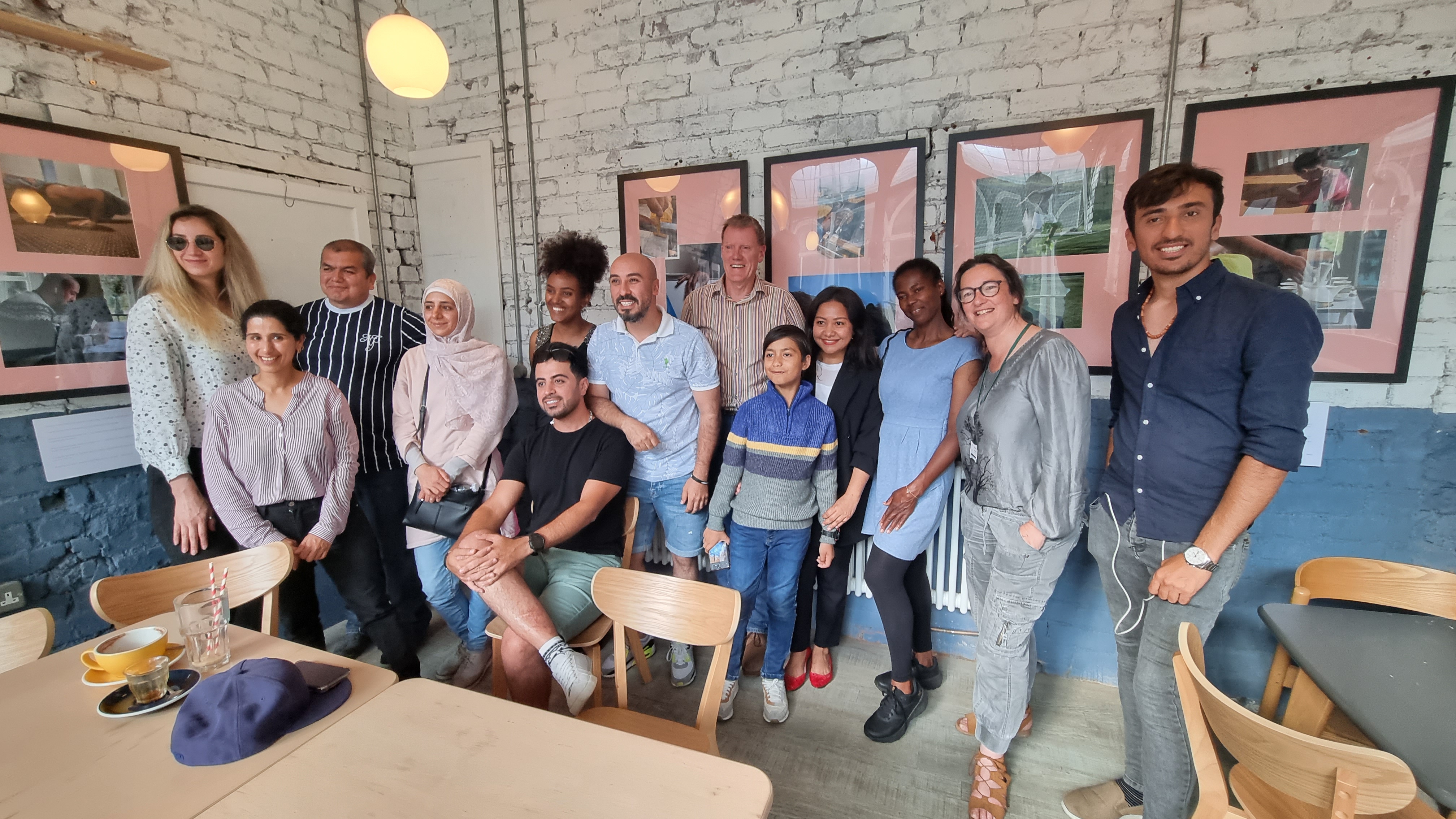
Earlier in the year we launched a call out to our Redeye Members for the opportunity to be interviewed about either their photographic practice or a body of work. These interviews have formed a short series of blog posts called ‘Method of Making’. Discover details about the photographers’ processes, ideas and intentions – have a read through to get inspired!
Next, we have Gerard Liston discussing his finished body of work: Circles of Compassion.
Redeye: Why did you make this body of work?
Gerard: The backdrop for this work was an unfolding series of tragedies in the English Channel; tightening legislation around migration routes into the UK, racist protests about hotel accommodation and reductive rhetoric from politicians to ‘Stop the Boats’.
Circles of Compassion is a concept urging us to extend empathy beyond our immediate circle of family, friends, and community. The words and images presented by this project provide a glimpse into the lives of people who, for many UK residents, live outside their circles of compassion. My aim was to invite an open-minded response to open-hearted sharing by ten people seeking refuge.
Redeye: What was (or is) your biggest inspiration for this work?
Gerard: Having spent time with staff, volunteers and ‘members’ at the St Augustine's refugee support centre in Halifax, I found myself motivated to contribute in a way that spoke more about refugees’ hopes and aspirations for the future, rather than about desperate situations they had left behind or the trauma of their journey – topics inevitably featured in the asylum application process.
I was influenced by other sensitive, creative and collaborative photographic work with refugees and this provided inspiration – and some practical tips - for my collaborative project. I was particularly moved by Alan Gignoux’s project You can see me, but I don’t exist (2023).
Redeye: Are there any environmental or sustainable factors you considered when making this work?
Gerard: Perhaps the greatest concern I had about this project was that it might exhibit some of the ‘predatory’ traits described by Susan Sontag (1977) who warns that “to photograph people is to violate them, by seeing them as they never see themselves, by having knowledge of them that they can never have; it turns people into objects that can be symbolically possessed.”
So, more than environmental factors, I had to consider ethical issues. Rather like Arpita Shah (2022) explains on The Photography Ethics Centre podcast: “it’s about being aware of the power you have as a photographer, being responsible and accountable for that trust that people are giving you when they allow you to photograph them, respecting that agreement, respecting them.”
Redeye: What was (or is) your most difficult challenge whilst making the work?
Gerard: Throughout this project, I was conscious of my own role within the collaborative process; working alongside people who had taken great risks and were making their case to remain in the UK. I am white, male, in a position of relative privilege and power and live in a country that has a history of colonialism and whose industrialisation has contributed to the effects of climate change that triggers migration for many.
A compassionate representation of refugees in the UK was a personal objective for the project, so it was a happy coincidence that the Refugee Week 2023 theme was ‘Compassion’.
Redeye: What are you most proud of in making this work?
Gerard: I veered towards anonymity in this project, seeking to put the spotlight on participants’ words and not differentiating my photography from images contributed by others. Although an apparently small matter, I feel it is both significant and encouraging that all the participants who were asked, expressed a desire to own their framed pair of photographs when the exhibition was dismantled.
It was encouraging to receive feedback during the project, including a message I received via WhatsApp after an initial discussion with Ammar from Syria: “I am happy to meet people like you, especially that you are talking about the positive points”.
Redeye: Did you make (or are you making) this work with somewhere in mind for it to live once it’s been completed?
Gerard: Although I considered gallery spaces, I felt that Temperance Café in Halifax, alongside the busy and historically important Borough Market, would provide a better way of influencing grassroots opinions about the topical issue of global migration.
An informal exhibition launch on the evening of the first day of Refugee Week involved many of the centre’s ‘members’ who had participated in the project, some of whom spoke about their experience and the importance of the photographic project. Combined with a free-to-view online photobook published in the Issuu platform, my aim was to make the work accessible and shareable for everyone.
 Photo taken at the exhibition launch, Temperance Café in Halifax
Photo taken at the exhibition launch, Temperance Café in Halifax
References:
Gignoux, A. (2023) https://gignouxphotos.com/projects/you-can-see-me-but-i-dont- exist/
Shah, A. (2022) on The Photography Ethics Centre podcast https://www.photoethics.org/podcast/arpita-shah
Sontag, S. (1977) On Photography. Penguin Books, London.
You can find out more about the other organisations linked to Gerard’s work below:
https://www.instagram.com/staugustinescentrehalifax/
https://www.instagram.com/refugeeweekuk/
https://www.instagram.com/temperance_halifax/?hl=en-gb
You can find out more about Gerard and his work below:
Redeye Portfolio
Gerard’s Issuu page
Gerard’s Circle of Compassion work on Issuu
Gerard’s Instagram
Photo credit: Gerard Liston